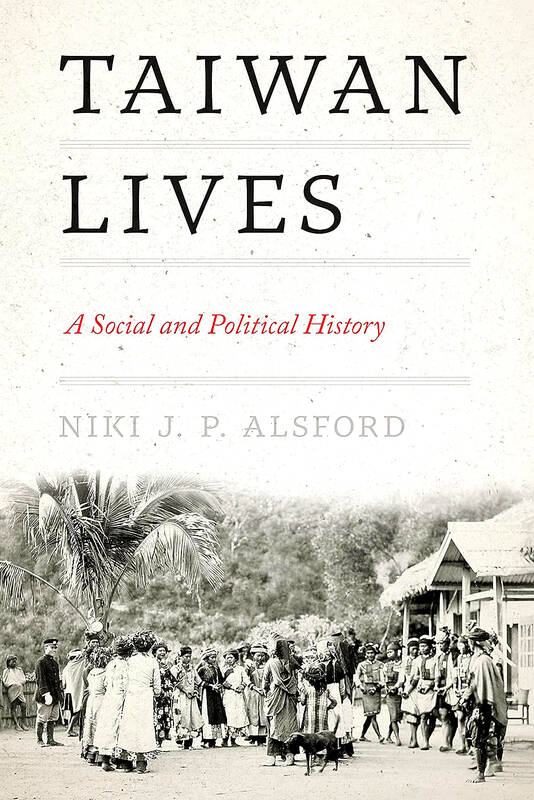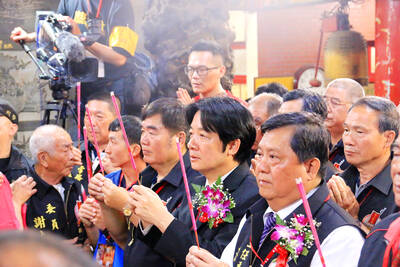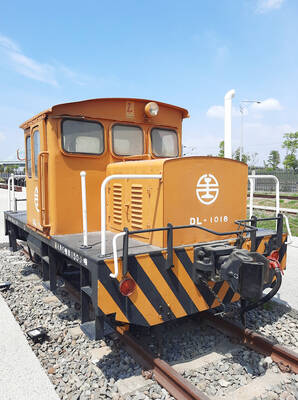Regular readers of academic works about Taiwan — or practically any other subject in the humanities and social sciences — will likely have encountered the notion of liminality. The frequency with which the term recurs almost suggests it is a prerequisite for publication in these fields.
Usages range from hazy enough to incorporate almost any interpretation right through to so obvious as to be redundant. It’s enough to have readers, by turns, scratching their head or rolling their eyes.
Thankfully, the appearance of “liminal” and “liminality” in the introduction to this book need not elicit either response. Opening with a reference to the Canterbury Tales, Taiwan studies scholar Niki Alsford, explains that the stories in Chaucer’s masterwork offer “diverse views” of a medieval England riven by “conflict among social classes.”

While providing individual perspectives through different representatives of society — soldiers, workers and clergymen — the 24 tales are “interlinked through common themes.” The two dozen tales in this book are similarly liminal in their depiction of Taiwan’s sociopolitical history — “not only covering the life of a single person, but also connecting, thematically, to the landscape.”
LANDSCAPES
Alsford explains that “landscape” here can refer to the real/absolute environment or the imagined/relative landscape. The former denotes a country’s “fixed geographical positions,” whereas the latter indicates human influence — “population size and density, as well as land use and settlement patterns.”
Of course, the two can overlap and be mutually reinforcing.
“The absolute influenced what people grew, farmed and fished, which in turn influenced their relative belief systems,” writes Alsford, observing that “this has led to multiple interpretations of what Taiwan is and what it is not.”
Just as the Canterbury Tales occupied a space that was “both geographic as well as spiritual,” blurring the demarcation between the real and the imagined, the tales in his collection, Alsford suggests, “offer a document on life and action, and how they are interpreted in a contemporary society.”
Like Chaucer’s tales, Alsford’s stories are didactic, illuminating formative periods, events or phenomena in the evolution of Taiwanese society through the lives of people who played roles in the processes described. Yet, Alsford’s narratives are something different: Some are hardly tales at all in the conventional sense.
Each chapter is divided into two parts. The first section often begins with a global context against which developments in Taiwan are set. This format creates a narrative hook, as it is not always obvious how the international events, trends or incidents that begin the chapters will segue into the focal analysis of a particular aspect of Taiwanese history or society.
The second section constitutes the tale itself. Often shorter than the introductory view, these close-ups sometimes read like bare-bones biographies, which might frustrate readers expecting Chaucerian anecdotes. Yet, they are expertly integrated not only with the opening segments but with contemporaneous events and characters in Taiwan, giving readers an understanding of how the individual was emblematic of their milieu.
One example is a chapter on Chen Pi-kuei (陳碧奎), a child laborer — or shonenko. The tale begins with reflections on the suffering of children during World War II: evacuees and Blitz casualties in the UK, Japanese American internees in the US and victims of the Holocaust.
Another is the tale of Wild Lily protest leader Fan Yun (范雲), which kicks off with observations about the opposing forces of conservatism and “antiestablishment subcultures” that defined the political spectrum of the 1980s. (The introduction even refers to the classic teen comedy The Goonies.)
There are occasional missteps, such as the assertion in the tale of World War II POW miner Jack Edwards that New Taipei City’s Jiufen District (九份) served as the inspiration for the anime Spirited Away. This claim was long ago dismissed by the film’s creator Hayao Miyazaki, and it is surprising to see it resurface here. Overall, though, these scene-setting preliminaries are impressively executed.
The standout case is the chapter on Chiang Wei-shui (蔣渭水) — a trailblazer for Taiwanese democracy. Beginning with the Treaty of Versailles and the Paris Peace Conference of 1919, Alsford notes that — thanks to the decisions of Europe’s movers and shakers — old nations were reemerging, while new ones were appearing.
This reshaping of the global order, which was “emphatically not just European,” was framed by “public intellectuals” as the cure for the ailing body politic of declining powers. Most notable, as the original “sick man of Europe,” was the crumbling Ottoman Empire, and it is revealing that Alsford draws on the Kurdish intellectual Abdullah Cevdet who, like Chiang, was a doctor by training.
Given the parallels between Taiwanese and Kurdish struggles for nationhood — the subject of a comparative study by Dean Karalekas in a recent work on Palestine, Taiwan and Western Sahara (reviewed in Taipei Times on Dec. 14, 2023) — the example is apposite.
Although Cevdet saw “institutionalized religion” as the source of the disease afflicting the Muslim world, the “existential angst” that he and other intellectuals felt during this uncertain period was mirrored in Chiang’s essay “A Patient Named Taiwan.”
This short treatise saw the author lamenting the “moral decay” afflicting his compatriots. Symptoms included superstition, an obsession with material possessions and a “focus … solely on short term profit” at the expense of “long-term planning,” which might sound familiar enough to leave some readers wondering whether the patient has fully recuperated, even now.
A PRESIDENT’S TALE
Any concerns over a lingering malady are dispelled in the book’s final chapter — A President’s Tale. Reverting to Chaucer with an introductory quote from The Parson’s Tale, Alsford implicitly compares the protagonist to Tsai Ing-wen (蔡英文), who was at the tail-end of her second term as president as this book was completed.
As this clergyman’s narrative — the presumed final episode of the Canterbury Tales — was “neither story nor poem but rather a treatise on penitence,” the choice might seem odd. Far from presenting reasons for regret or repentance, Alsord offers a glowing appraisal of Tsai’s tenure as having left “an indelible mark on Taiwan’s political landscape.”
But the key to the comparison lies in the Parson’s status as, in Chaucer’s words, “a shepherd not a mercenary,” and in Alsford’s, “ a man who practices what he preaches.”
Praising the former president for her “remarkable determination and resilience in navigating a range of complex domestic and international challenges,” Alsford concludes that “Tsai’s vision and integrity as president will undoubtedly shape the trajectory of the country’s future.”
For a scholarly work, it’s a somewhat gushing, uncharacteristically partial assessment, but not one to which any reasonable person could object. Most importantly, it integrates perfectly with the kaleidoscope of snapshots that has preceded, serving as a natural denouement to a collection that presents Taiwan in a unique, multifaceted fashion.

The Democratic Progressive Party (DPP), Chinese Nationalist Party (KMT), and the country’s other political groups dare not offend religious groups, says Chen Lih-ming (陳立民), founder of the Taiwan Anti-Religion Alliance (台灣反宗教者聯盟). “It’s the same in other democracies, of course, but because political struggles in Taiwan are extraordinarily fierce, you’ll see candidates visiting several temples each day ahead of elections. That adds impetus to religion here,” says the retired college lecturer. In Japan’s most recent election, the Liberal Democratic Party lost many votes because of its ties to the Unification Church (“the Moonies”). Chen contrasts the progress made by anti-religion movements in

Taiwan doesn’t have a lot of railways, but its network has plenty of history. The government-owned entity that last year became the Taiwan Railway Corp (TRC) has been operating trains since 1891. During the 1895-1945 period of Japanese rule, the colonial government made huge investments in rail infrastructure. The northern port city of Keelung was connected to Kaohsiung in the south. New lines appeared in Pingtung, Yilan and the Hualien-Taitung region. Railway enthusiasts exploring Taiwan will find plenty to amuse themselves. Taipei will soon gain its second rail-themed museum. Elsewhere there’s a number of endearing branch lines and rolling-stock collections, some

Last week the State Department made several small changes to its Web information on Taiwan. First, it removed a statement saying that the US “does not support Taiwan independence.” The current statement now reads: “We oppose any unilateral changes to the status quo from either side. We expect cross-strait differences to be resolved by peaceful means, free from coercion, in a manner acceptable to the people on both sides of the Strait.” In 2022 the administration of Joe Biden also removed that verbiage, but after a month of pressure from the People’s Republic of China (PRC), reinstated it. The American

This was not supposed to be an election year. The local media is billing it as the “2025 great recall era” (2025大罷免時代) or the “2025 great recall wave” (2025大罷免潮), with many now just shortening it to “great recall.” As of this writing the number of campaigns that have submitted the requisite one percent of eligible voters signatures in legislative districts is 51 — 35 targeting Chinese Nationalist Party (KMT) caucus lawmakers and 16 targeting Democratic Progressive Party (DPP) lawmakers. The pan-green side has more as they started earlier. Many recall campaigns are billing themselves as “Winter Bluebirds” after the “Bluebird Action”